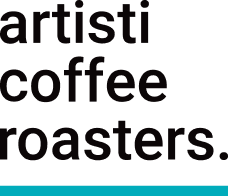Boost Your Bottom Line and Go Green: 7 Essential Strategies for Cafe Waste Reduction
Running a successful cafe is a balancing act. While crafting the perfect latte is key, overlooking operational efficiency—especially managing waste—can quietly erode your profits and tarnish your sustainability reputation.
Waste in a cafe isn't just an environmental issue; it directly impacts your purchasing, labor, and disposal costs. This guide outlines seven practical, proven strategies to help you minimize wastage, leading to a more eco-friendly and profitable business.
1. Master the Grind: Eliminating Coffee Grind Wastage
Coffee grinds are often the biggest culprit for daily wastage. Reducing it starts right at the espresso machine.
-
Precision Dosing: Stop relying on guesswork. Implement a strict protocol using scales to measure the exact amount of whole bean or ground coffee needed for each basket. This eliminates costly overdosing.
-
Optimize Your Grinder: Calibrate your grind time and dosing technique to prevent overfilling the portafilter basket. Consider upgrading to a grinder with a low-retention or redesigned chute to prevent coffee from spraying onto the bench.
-
Dosing Pots for Zero Spillage: Transitioning from grinding directly into the portafilter to using dosing pots ensures every ground bean lands in the basket, not on the counter. This simple change drastically reduces unnecessary wastage and cleanup time.
2. Turn Waste into Resource: Creative Coffee Ground Reuse
Don't let used coffee grounds go straight to the bin—they are a valuable resource! Market this to your customers to encourage pickup.
-
Soil Amendment & Compost: Coffee grounds are rich in essential nutrients (nitrogen, phosphorus, potassium). Offer them to local gardeners or add them directly to your cafe’s compost.
-
Natural Pest Deterrent: Bagged grounds act as a natural, safe deterrent for pests like ants, slugs, and snails—popular with home gardeners.
-
Cleaning Scrub: Use the abrasive texture of dried grounds as an eco-friendly scrub for cleaning stubborn, greasy surfaces.
3. Streamline Disposal: Implementing an Efficient Knock Tube System
An organized waste system saves money and simplifies operations.
-
Knock Tube Bags: Use purpose-designed knock tube bags inside your spent coffee bins. These bags not only keep your bins clean but also make it easy for staff to transfer grounds for reuse.
-
Customer Collection Program: Clearly advertise that customers can collect coffee grounds for their gardens. By redirecting this waste from landfill, you reduce your overall volume and potentially save money on commercial waste collection costs.
4. Optimize Milk Usage: Tackling Milk Wastage
Milk often ranks as one of the most significant and most expensive sources of waste in a cafe.
-
The "Bucket Test": Visually demonstrate the financial impact of wasted milk. Use a dedicated bucket for a week to collect all the milk baristas tip down the sink, then calculate the actual dollar cost.
-
Mindful Fill Levels: Train baristas on the specific and varying milk fill levels required for different drink types (e.g., cappuccino vs. flat white). Encourage them to measure precisely, not guess.
-
Right-Sized Jugs: Provide a range of right-sized milk jugs that correspond to your various cup sizes. Using a jug that is too large guarantees leftover milk.
5. Perfect Frothing Techniques for Cost Savings
Better technique directly translates into material savings.
-
Froth vs. Liquid Ratio: Train baristas to understand the relationship between froth volume and starting milk volume. More froth means starting with less liquid milk, which instantly reduces costs per cup.
-
The Jug Splitting Technique: Teach staff how to skillfully steam milk for a larger volume (e.g., enough for two small drinks) and then split the jug accurately into two cups. This saves both milk and preparation time.
6. Sustainable Packaging and Supplies
Address the "single-use" challenge by making eco-friendly choices the norm.
-
Customer-Driven Takeaway: Always ask customers, "Do you need a bag/tray?" for takeaway orders. Avoid unnecessary packaging unless explicitly requested.
-
Encourage Reusable Cups: Implement a clear incentive program (e.g., discount) for customers using their own cups.
-
Mug Return System: Consider a refundable 'mug return system' for in-house or local takeaways. This not only cuts down on disposable cup waste but can also serve as a unique branding opportunity.
7. Invest in Energy-Saving Equipment
Operational efficiency extends beyond physical waste to energy consumption.
-
Eco-Mode Coffee Machines: When purchasing or upgrading, prioritize high-end espresso machines that offer eco mode or standby settings. This allows the machine to draw less power during slow periods or overnight.
-
Energy-Efficient Appliances: Replace old, power-hungry milk fridges and dishwashers with new, energy-efficient appliances. The initial investment is quickly recovered through significant savings on your monthly power bill.
By consciously implementing these seven strategies, your cafe can become a leader in sustainability, reduce its environmental footprint, and, most importantly, significantly enhance its financial health. Start today and strive for a greener, more profitable future!










